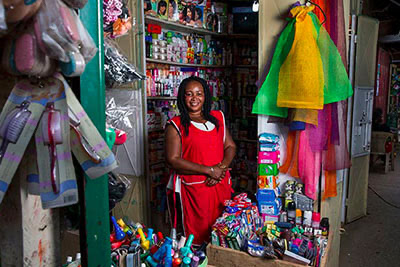The relationship between informality and poverty, inequality, and economic growth is complex. This section of the website explores what is known about these relationships.

Links with Poverty
There is significant overlap between working in the informal economy and being poor. This sub-section explores what is known about the relationship between informality and poverty by summarizing findings of recent studies that used different measurement approaches.
Statistical evidence suggests a hierarchy of earnings and poverty risk across the various segments of the informal workforce, and a gender gap: average earnings are higher and the risk of poverty is lower for informal employers (who tend to be men) than for other segments; average earnings are lower and the risk of poverty is higher for industrial outworkers (who tend to be women) than for other segments; with the result that average earnings are lower and the risk of poverty is higher among women informal workers, compared to men informal workers.
Links with Inequality
The inequalities between those at the base and the tip of the economic pyramid can be traced through nested layers of inequality: between capital and labor, between formal and informal workers and between different groups of informal workers – and between women and men at each level.
In today’s globalized economy, income and wealth are increasingly concentrated at the tip of the economic pyramid. At the same time, once formal work is being informalized, new forms of informal work are being created and informal workers are facing new challenges.
Links with Growth
It is widely assumed that the informal economy is counter-cyclical: that is expands during periods of economic crisis or stagnation and declines during periods of economic growth. It is also widely associated with low productivity – and, therefore, is seen as being a drag on the economy.
Another way to think about the link between informality and economic growth is to consider the growth in size and productivity of informal enterprises. This requires understanding the structural barriers that informal operators face: especially the stigmatization of informal operators as illegal or even criminal that leads to punitive policies against them. Given these barriers, there is also a need to explore what “productivity” and “productive growth” mean in the informal economy, and to rethink the definitions and measures of productivity.
This sub-section explores the two-way linkages between informality and growth: the impact of economic growth on the informal economy; and the informal economy on economic growth. See Links with Growth.
Links with Economic Crises
The informal economy is thought to provide a “cushion” during crises to those who lose jobs. Little attention has been paid to how firm this cushion is for new entrants to the informal economy, and what happens to those already working in the informal economy. This section summarizes findings from two rounds of a study – in 2009 and 2010 – on the impact of the global recession in 10 countries on three occupational groups: home-based producers, street vendors, and waste pickers.
